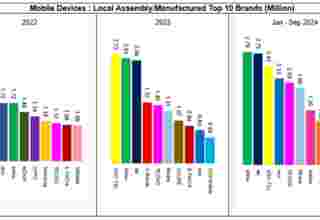ISLAMABAD, July 14 (Online): Switching from table salt to salt substitutes can help reduce the risk of stroke in people over age 60 with a history of high blood pressure or prior stroke.
That’s according to a study published this week in the New England Journal of Medicine.
The research included nearly 21,000 participants and took place in 600 villages in rural areas of five provinces in China.
About 72 percent of study participants had a history of stroke, and 88 percent had a history of high blood pressure.
Participants were given free salt substitutes (about 75 percent sodium chloride and 25 percent potassium chloride) as a replacement for regular salt and advised to use it for all cooking, seasoning, and food preservation.
They were also encouraged to use the salt substitute more sparingly than they previously used salt to maximize their sodium reduction.
Enough salt substitute was provided to cover the needs of the entire household (about 20 grams per person per day).
Participants in other villages continued their usual cooking and eating habits.
The project was supported by the National Health and Medical Research Council.
“This study provides clear evidence about an intervention that could be taken up very quickly at very low cost… We have now shown that it is effective and these are the benefits for China alone. Salt substitution could be used by billions more with even greater benefits,” said Dr. Bruce Neal, a principal investigator in the study and a professor at the George Institute for Global Health in Sydney, Australia, in a press release.
How relevant is the research?
A big question stemming from this research is whether it’s applicable in the United States and other countries outside of China.
“Although I wish I could say yes, it’s more realistic to say probably no,” said Dr. Elizabeth Klodas, FAAC, a cardiologist based in Minneapolis and the founder of Step One Foods.
Klodas noted that since the study looked at high-risk populations, the findings may not translate to other populations (for example, people without high blood pressure and no prior stroke).
“This was also a study of a unique genetic/cultural group with specific dietary habits/patterns and may not translate to other populations,” Klodas told Healthline.
The biggest barrier for lowering sodium intake in the United States is that much of our sodium intake is not under our control.
“In rural China, most meals are cooked from scratch, so sodium intake is under the control of the food preparer. Americans consume far more pre-prepared and processed foods — and a lot of those items deliver a lot of sodium even before we pick up the salt shaker,” Klodas explained.
Sodium can also hide almost anywhere, she said.
A plain bagel, for example, can contribute 450 milligrams of sodium, even before you put anything on it. The maximum recommended sodium intake is 2,300 milligrams a day, so one bagel is about 20 percent of an entire day’s sodium allotment.
“The salt substitute won’t help you much there,” Klodas said.
“Finally, baseline salt consumption was very high (assumed to be as much as 20 grams of salt per person per day), so the effect seen might not translate to those consuming less salt to begin with,” she added.
Kimberly Gomer, MS, RD, LDN, director of nutrition at Pritikin Longevity Center, explained that while in theory a salt substitute would improve cardiovascular risk since it would certainly improve high blood pressure, it comes with a price.
“Potassium chloride as a substitute is a problem. As we age, our kidney function naturally slows. We measure kidney function by glomerular filtration rate, or GFR.
“Our kidneys are our filtering device. So the natural aging process will slow GFR, and putting potassium directly on foods as a seasoning will negatively affect this,” Gomer told Healthline.
What to eat for better heart health
Ultimately, said Klodas, the answer is not to figure out how to manipulate the sodium content of what we habitually eat, but rather to change what we eat.
“We never recommend those salt substitutes but instead recommend beautiful herbs, both dried and fresh, to enhance the taste of food,” Gomer said.
She explained such a change is an adjustment of the palate.
Because we are used to heavily salted foods and the use of salt and other high salt seasoning, such as soy sauce, teriyaki, and all the various black and Himalayan salts that are now popular, it can take weeks or months to make this adjustment.
“One easy way to reduce sodium in our diets is to purposefully add in foods that are naturally sodium-free, including all fresh fruits and vegetables,” Klodas said. “This helps to naturally displace higher sodium items.”
She explained that eating a piece of fruit before having lunch or dinner, for example, can be a way to help lower sodium intake while increasing intake of multiple beneficial nutrients, including potassium.
“Adding fresh or frozen fruits and vegetables while reducing sodium intake has been shown to be as effective as adding a drug for lowering blood pressure,” Klodas said.
While it takes some time to make the switch and see the benefits, Gomer said the positives are clear.
“Less bloating, decreased water retention, easier weight loss due to lack of salt stimulation and, most important, a reduction of blood pressure (quickly) in those that are salt sensitive,” she noted.



























